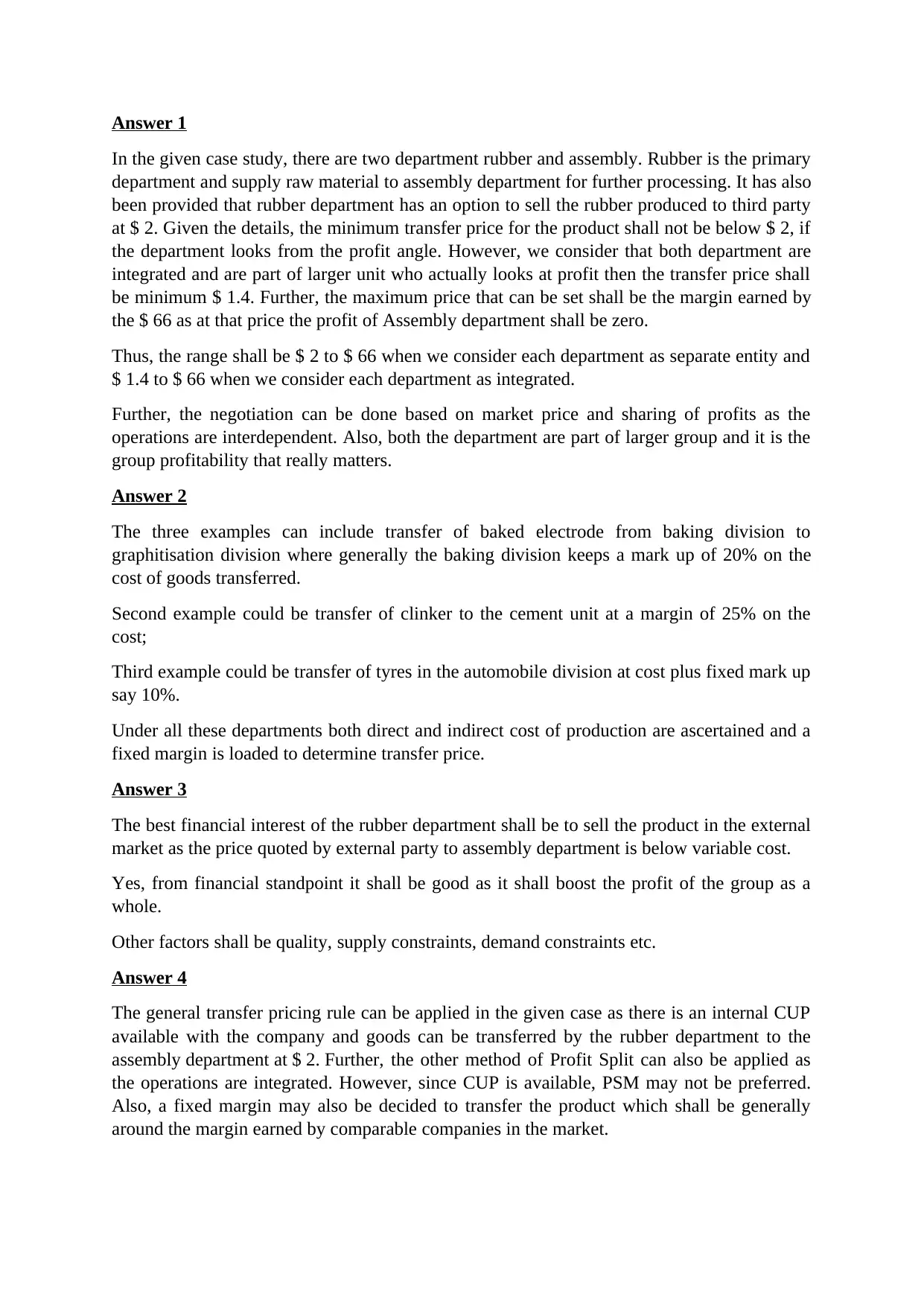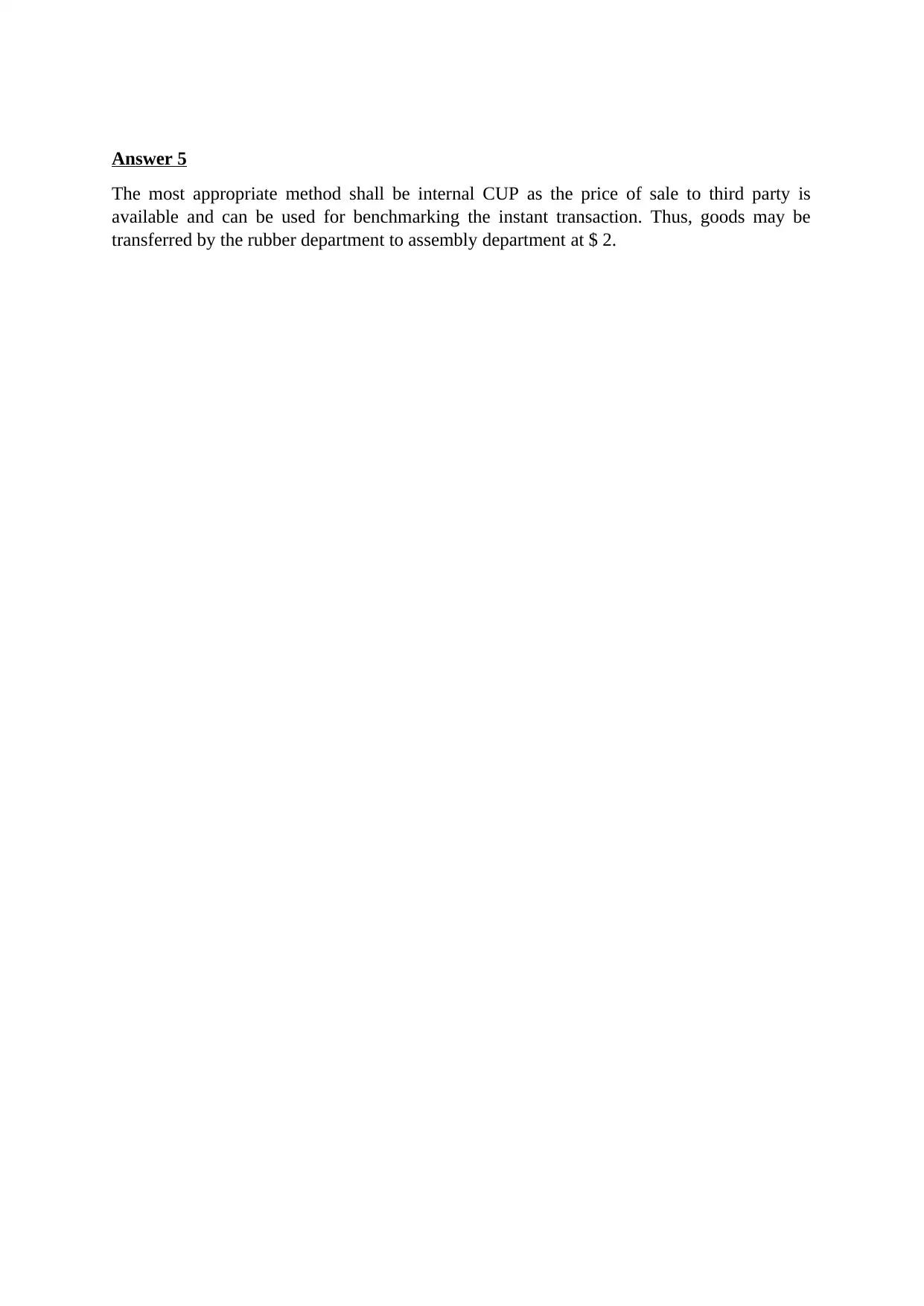Valley Forge Steel: Transfer Pricing Case Study and Analysis
VerifiedAdded on 2022/10/18
|2
|536
|316
Case Study
AI Summary
This assignment analyzes the transfer pricing strategies within Valley Forge Steel, examining the optimal methods for setting prices between the rubber and assembly departments. The case study explores the application of various transfer pricing methods, including the internal CUP (Comparable Uncontrolled Price) and profit split methods, and evaluates their impact on departmental and overall group profitability. The analysis considers factors such as external market prices, variable costs, and potential profit margins to determine the most financially advantageous approach for the company. The study also highlights the importance of integrated operations and negotiation in achieving optimal transfer pricing outcomes, with a focus on maximizing overall group profit. The assignment provides detailed answers to questions about the minimum and maximum transfer prices, the best financial interests of the rubber department, and the most appropriate transfer pricing method. The student's analysis provides insights into the decision-making process and recommendations for the company's financial strategy. The case study provides a practical application of transfer pricing principles within a business context.
1 out of 2





![[object Object]](/_next/static/media/star-bottom.7253800d.svg)